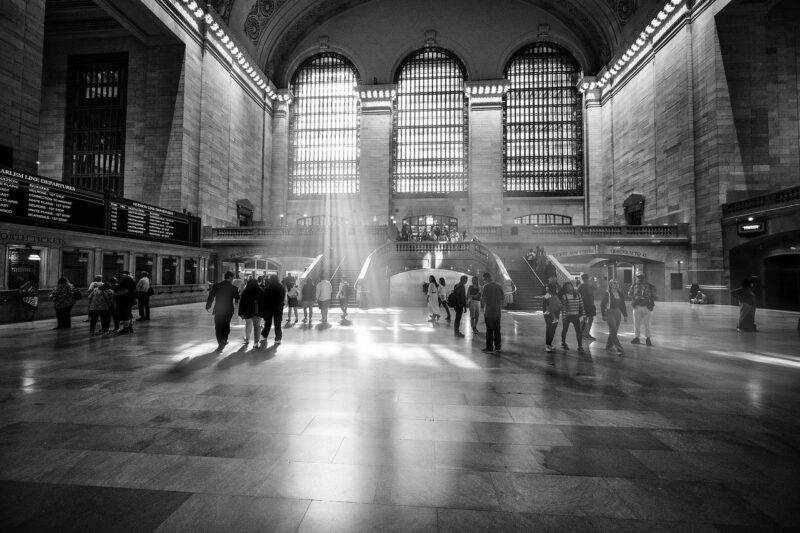The World’s Largest Railway Stations and Their Fascinating Histories
November 11, 2024

Railway stations have long served as vital hubs of transportation, connecting people and places across vast distances. Some stations stand out not just for their size, but also for their historical significance, architectural beauty, and cultural relevance. In this article, we will explore some of the world’s largest railway stations and delve into the fascinating histories that make them monumental landmarks.
1. Introduction to Railway Stations
Railway stations are more than mere transit points; they are gateways to cities and countries, often serving as reflection points of cultural and technological advancement. From grandiose designs to bustling activity, these stations represent the pulse of urban life. Additionally, they often tell stories of innovation, human ambition, and historical events that shape the world.
2. Grand Central Terminal, New York City, USA
Located in the heart of Manhattan, Grand Central Terminal is one of the busiest railway stations in the world. Opened in 1913, it features 44 platforms—more than any other station—and serves over 750,000 visitors daily.
The station is celebrated for its stunning Beaux-Arts architecture, highlighted by a magnificent celestial dome above the main concourse. This breathtaking mural depicts the night sky and includes zodiac symbols.
Not just a transportation hub, Grand Central Terminal has a rich history that includes military use during World War II and numerous cultural references, making it an iconic symbol of New York City.
3. Tokyo Station, Japan
Tokyo Station, opened in 1914, is a major rail hub in Japan, serving as the main station for Shinkansen (bullet trains). The station is known for its red-brick Western-style architecture, which contrasts beautifully with the sleek modern buildings of Tokyo.
With 26 platforms, Tokyo Station handles over 1,000 trains daily, making it the busiest station in the country. The station played a crucial role in the development of Japan’s rail transport system post-World War II, contributing significantly to the country’s rapid industrial growth.
Beyond transportation, Tokyo Station is also home to shopping, dining, and unique cultural experiences, making it a favorite destination for tourists and locals alike.
4. Beijing West Railway Station, China
As the largest railway station in Asia, Beijing West Railway Station opened in 1996 and serves as a critical stop for trains traveling to cities like Xi’an and Shanghai. Covering an area of over 500,000 square meters, it features a mix of traditional and modern architectural styles, including vast halls and intricate designs.
The station serves over 200,000 passengers daily, demonstrating China’s heavy investment in rail infrastructure. Beijing West played a key role in facilitating domestic travel, particularly during the Spring Festival, when millions return home.
Furthermore, the station is adjacent to the city’s subway network, enhancing its functional importance in Beijing’s extensive transport system.
5. Paris Gare du Lyon, France
Gare du Lyon is one of the six major railway stations in Paris, known for its historic charm and striking architecture. Opened in 1847, it serves both domestic and international routes, connecting Paris to various destinations in France and across Europe.
Famous for its clock tower and magnificent old-world charm, the station is as much a cultural icon as a functional space, featuring shops, restaurants, and a vibrant atmosphere. Historical events, including wartime evacuations and the arrival of Victory in Europe Day, have shaped its legacy.
6. Chhatrapati Shivaji Maharaj Terminus, Mumbai, India
Recognized as a UNESCO World Heritage Site, Chhatrapati Shivaji Maharaj Terminus (formerly Victoria Terminus) stands as a testament to Mumbai’s colonial past. Opened in 1888, it embodies the Gothic Revival architectural style, combining Indian and Victorian elements.
The station is a major railway hub with over 3,000 trains passing through daily, serving more than 1,000,000 passengers. Its historical significance is amplified by its involvement in key events in Indian history, including independence movements.
Visitors are often captivated by its intricate architecture and the hustle and bustle of travelers making their way through its busy concourse.
7. Union Station, Washington D.C., USA
Union Station, opened in 1907, is more than just a railway station; it’s an architectural marvel that hosts a range of dining and shopping options. With its grand halls and majestic architecture, it serves as a vital link between the east and west coasts of the United States.
An estimated 40 million passengers pass through Union Station annually, making it one of the top visited places in Washington D.C. Historically significant, the station played a crucial role in the development of rail travel across the nation and has been the backdrop for various historical events.
8. Conclusion: The Enduring Legacy of Railway Stations
The world’s largest railway stations are not just transit points; they are odes to human ingenuity, ambition, and progress. Their fascinating histories provide insight into the cities they serve and reflect the social, political, and economic changes that have occurred over time. Whether standing as architectural marvels, economic catalysts, or cultural hubs, these stations will continue to shape our experience of travel for decades to come.
In appreciating these monumental structures, we recognize that they are more than functional spaces—they embody the interconnectedness of our global society and the endless journeys that shape our lives.








